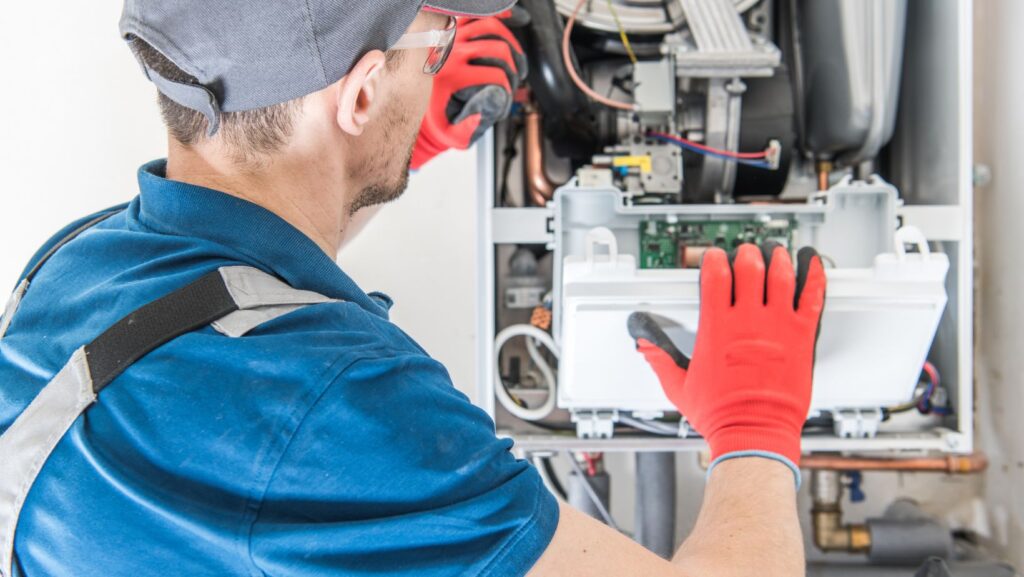
Understanding the lifespan of a gas furnace is crucial for homeowners when planning for maintenance and replacement. This guide provides insights into how long a gas furnace typically lasts, factors that influence its lifespan, and tips for extending it.
Average Lifespan of a Gas Furnace
The average lifespan of a gas furnace is typically between 15 to 20 years. However, this can vary based on the furnace’s make, model, usage, and maintenance practices. High-quality furnaces maintained regularly can even surpass the 20-year mark.
Factors Affecting Furnace Lifespan
Quality of the Furnace:
Furnace lifespan is linked to its quality, with higher-quality models often lasting longer due to superior materials and engineering. Prioritizing quality over cost can lead to extended service life.
Usage
Frequent and intense furnace usage can accelerate wear and tear, especially in harsh climates. It’s crucial to consider climate and usage patterns when choosing a furnace to ensure it can handle your demands.
Maintenance
Regular maintenance is essential for preserving a gas furnace’s lifespan. Tasks include cleaning, lubrication, leak checks, filter changes, and system checks. Well-maintained furnaces operate efficiently and last longer.
Installation
Certified professional installation is vital for optimal furnace performance and longevity. Improper installation can lead to issues like poor heating, higher energy consumption, and premature component wear. Professional installation ensures safe and efficient operation.
Signs of Aging in Gas Furnaces
Be aware of signs that your furnace may be nearing the end of its life:
Increased repair frequency:
When your furnace starts requiring more frequent repairs, it could be a sign that it’s reaching the end of its life. Frequent furnace breakdowns in winter may indicate that essential components are wearing out.
Rising energy bills:
If you notice a significant and sustained increase in your energy bills, your furnace may be losing efficiency as it ages. Older furnaces tend to consume more energy to provide the same level of heating.
Inconsistent heating:
Inconsistent heating, with some areas of your home feeling too warm while others remain cold, can be a symptom of an aging furnace struggling to distribute heat evenly.
Strange noises or smells:
Unusual noises or odors emanating from your furnace can be concerning signs of wear and tear. These may indicate problems with components such as the blower motor, burner, or heat exchanger.
Maintenance Tips for Extending Furnace Life
Regular Inspections:
Schedule an annual professional inspection and servicing of your furnace to ensure its optimal performance and longevity.
Change Filters Regularly:
Replace or clean the furnace filter every 1-3 months to maintain efficient airflow and reduce strain on the system.
Keep Vents Clear:
Regularly check and ensure that all vents and air intakes are free from obstructions to maintain proper airflow and heating efficiency.
Monitor Thermostat Settings:
Avoid setting extreme temperatures on your thermostat to lessen the strain on your furnace, promoting a longer lifespan and energy efficiency.
Considering Replacement
If your furnace is approaching or has surpassed the 15-year mark, start considering replacement options.
Modern gas furnaces are more efficient and may provide savings in energy costs. Look for ENERGY STAR-rated models for the best efficiency.
Conclusion
The lifespan of a gas furnace can significantly impact home comfort and budgeting. By understanding the average lifespan, recognizing signs of wear, and adhering to maintenance guidelines, homeowners can ensure their furnaces operate efficiently for as long as possible. Remember, an efficiently running gas furnace not only provides comfort but can also contribute to energy savings and a reduced carbon footprint.














